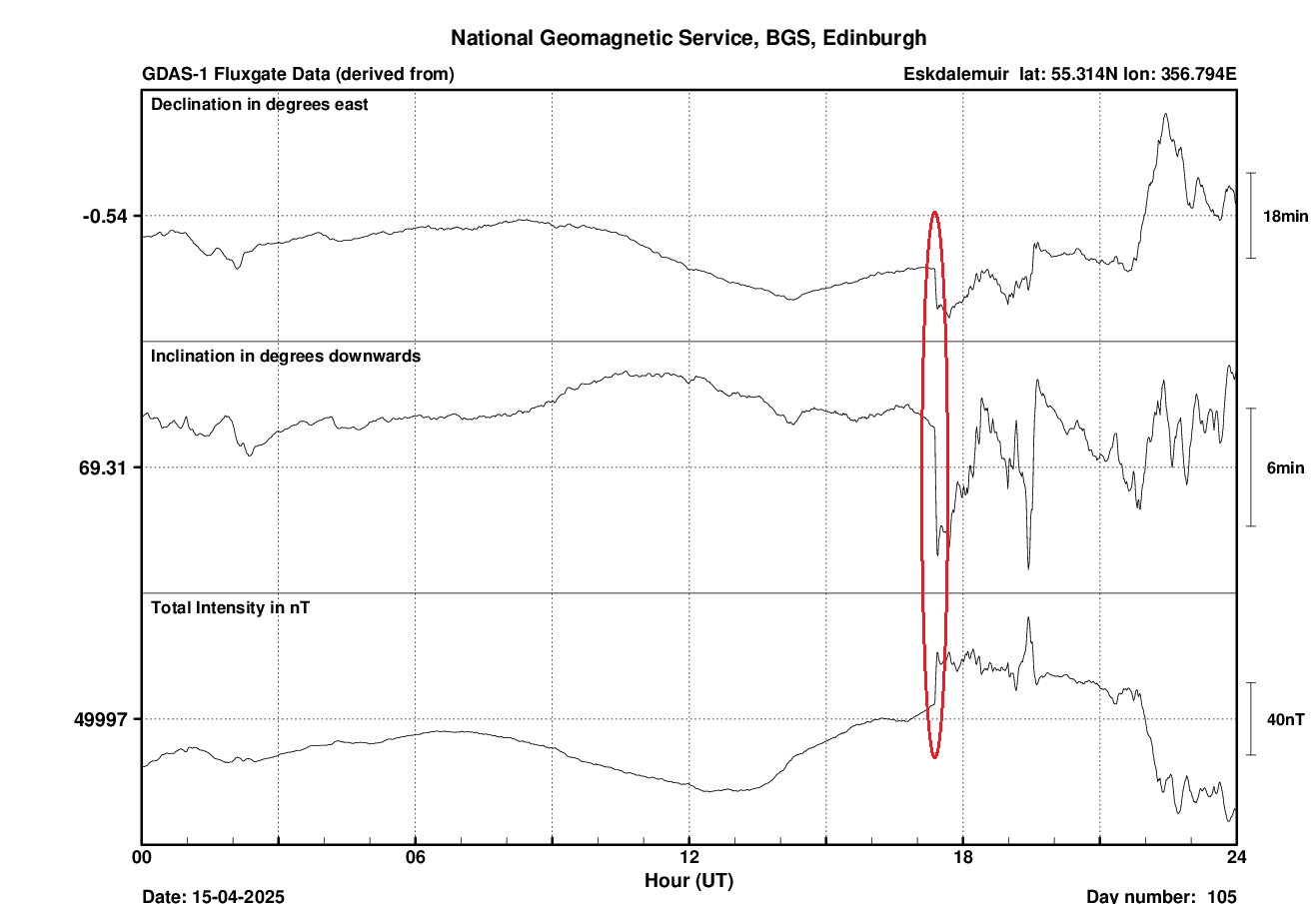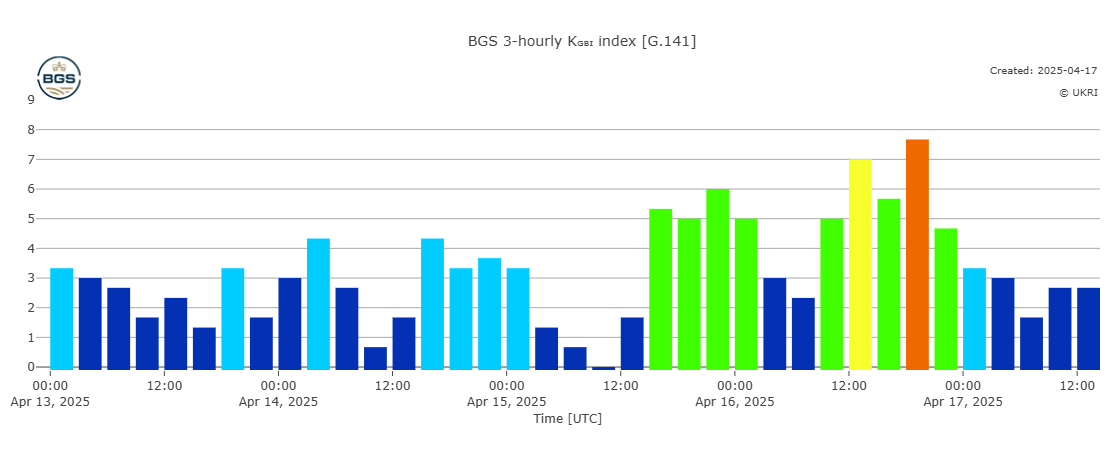Home
»
Data Services
»
Space Weather
»
Space Weather Alerts
»
Geomagnetic storm forecast 17th April 2025
Geomagnetic storm update - 17th April 2025
What Has Happened?
The two coronal mass ejections (CMEs) that left the Sun on 13th April combined en-route to Earth and arrived on 15th April. A sudden storm commencement was recorded in the magnetic field measurements at 17:22 UT, causing geomagnetic activity to increase to STORM G2.
Conditions briefly quietened down before picking up and intensifying during 16th April. Prolonged STORM activity followed for 15 hours, peaking at STORM G3 levels (G4 in the UK). Residual effects from this event are continuing, but with a declining trend in intensity.Assuming clear dark skies, there is still a chance of seeing the aurora tonight. Those in Scotland, northern England and Northern Ireland have the best chance if the weather is favourable.
Sign-up to receive Geomagnetic Disturbance Alert emails.
Follow us on Twitter:
Follow @BGSauroraAlert for more occasional aurora alerts.
Follow @BGSspaceWeather for daily space weather forecasts.
Glossary
- BGS
- The British Geological Survey is a geoscience research centre that is part of UK Research and Innovation (UKRI) and affiliated to the Natural Environment Research Council (NERC).
- CME or Coronal Mass Ejection
- The eruption of a portion of the outer atmosphere of the Sun into space, caused by rapid changes in its magnetic field. Often occurs along with a solar flare.
- Sudden Storm Commencement
- An unexpected sharp increase in the Northern (X) magnetic component of a considered observatory (SSC).
- Magnetogram
- The variation, minute by minute, of the strength and direction of the Earth’s magnetic field. Measured in units of nano-Tesla (for the strength of the field) or in degrees (direction of the field).

Models & Compass Variation
Space Weather
INTERMAGNET software



